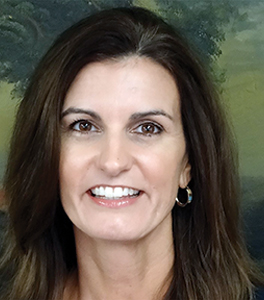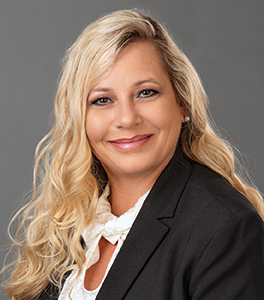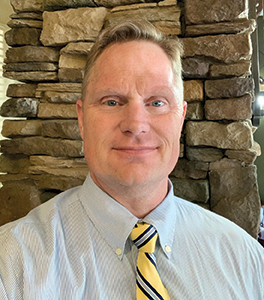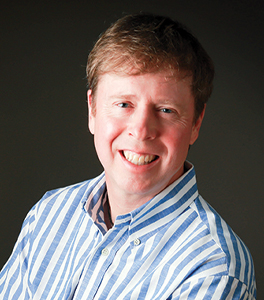 The road to staff recruitment and retention remains rocky, but innovators are building a future that will enable post-acute and long term care communities to attract and keep the best and brightest and have a strong employee pipeline.
The road to staff recruitment and retention remains rocky, but innovators are building a future that will enable post-acute and long term care communities to attract and keep the best and brightest and have a strong employee pipeline.
Even if people love their work, no one wants a dead-end job. “It is important to give team members a career path. Younger people in particular want to know there are opportunities for advancement,” said Kristen Knapp, APR, CPRC, CAE, senior director of strategy and communications, Florida Health Care Association.
Increasingly, providers are thinking outside the box, connecting with schools and other partners; inventing creative ways to recognize, reward, and engage people; and establishing pathways to enable employees to grow and thrive.
The Highway to CMA
One increasingly popular idea is especially win-win. It frees up nurses to spend more time on bedside care and gives CNAs a career opportunity. “We hear from nurses that they often spend hours on medication pass, and it limits their ability to use their clinical skills. At the same time, we have CNAs with patient care skills who would welcome a new role,” said Knapp. Bring these two things together, and the result is the Qualified Medication Aide role. There is a limit to what products and medications they can administer, but they take some burden off the nurses, who are freed to spend more time on activities that utilize their clinical skills and knowledge.
To become a medication aide, said Knapp, a person has to work as a CNA for a year, demonstrate clinical competencies, and complete 160 hours of training. The role not only comes with new responsibilities, but the medication aide also gets a salary bump.
Florida-based Mission Health started a Certified Medical Aide (CMA) training program to “grow its own.” Glenda Crellin, RN, IP-BC, GERO-BC, Mission Health, said, “We can do it better, developing a higher level of competence in new staff and increasing employee engagement and motivation.” She noted that the program creates qualified employees who feel valued early on, and it increases the likelihood that they will stay in your employ.
To make the CMA path work, Crellin suggested a few steps:
- Do your research and understand all state- and federal-specific requirements. Make connections with state agencies and health care associations.
- Identify necessary resources, including time, space, qualified instructors, equipment, textbooks, and learning management systems.
- Develop consistent processes that make sense for your organization, including an appropriate curriculum.
- Don’t forget the quality improvement piece. Tweak and evolve the course over time using feedback and other data.
Creating a CMA program won’t be easy, Crellin observed. The state may deny your application, and even when you get approved, there will be challenges, such as budget constraints, that will impact access to resources and the ability to invest in recruitment. “You will encounter some obstacles. If you hit a wall, find out what the problem is and fix it,” said Crellin, adding, “It’s worth it!”
 A plan to get people in and started quickly is key to recruitment, she suggested. If you take too long to respond to inquiries or applications, she said, you will lose people.
A plan to get people in and started quickly is key to recruitment, she suggested. If you take too long to respond to inquiries or applications, she said, you will lose people.
Florida-based Aston Health also has a CMA program, and CEO Tricia Thacker and chief nursing officer Jen Lawrence were instrumental in helping to pass state legislation to allow the use of qualified medication aides in nursing centers.
“Our goal is to give more quality back to the bedside. This is an opportunity for CNAs to go through a higher-level extensive training program,” said Thacker, adding, “It is also a chance for them to move up the career ladder and enable nurses to spend more time providing bedside care.”
Lawrence noted, “The response has been overwhelmingly positive.” Thacker said, “CNAs like this and see it as a privilege and a possible bridge to becoming a nurse. They realize that only the best of the best are chosen. They take it seriously and want to do a good job.”
Not only is this effort valuable to attracting and keeping good CNAs, Lawrence said, “We are hoping it will attract more nurses and more nursing professionals to this industry.”
Career paths like this are critical, Knapp stressed. “We have a tremendous need to show our team members that they can grow in their career,” she said. Crellin added, “We can’t count on schools to solve our staffing challenges. They’re struggling too.”
Mentors and DNAs
Mission Health also established a mentorship program as a way to help attract and retain good nurses. The benefits, said Jacqueline Vance, RN, senior director of clinical innovation and education at Mission Health, include enhanced recruitment, increased staff retention, decreased turnover, retention of corporate knowledge, development of nurse leaders, and an increased pool of individuals who contribute to the organization’s mission and vision.
The mentorship, said Vance, helps new hires see that “the mentor has their back, and they go through the experience together. They make sure you are comfortable before you go out on the floor.” She added, “Having someone invested in you makes a difference.”
Vance and her team used an evidence-based approach to establish a mentorship that involves a mentor application, mentor agreement, a welcome letter or card from the mentor to their mentee during orientation, and a mentee skills check-off list. They created training plans and workbooks for mentees with skills/job duties to be overseen by the mentor. The program involves scheduled check-ins, and the mentors get bonuses based on mentees’ retention.
The program starts with a strong vetting process. “You should know why people want to be mentors. You need to ask questions that will help you identify the cream of the crop,” Vance said.
Having a CNA department with a director of nursing assistants (DNA), said Lori Porter, CEO and co-founder of the National Association of Health Care Assistants, “would enable CNAs to be rewarded for their contributions to improving the quality of care and quality of life for residents and increase staff satisfaction and retention.”
The DNA would report directly to the administrator. Working with the DNA and as part of the care team, each CNA would be empowered to make resident requests happen. Of course, Porter said, “There would be some specific guidelines and criteria to serve as guidance. However, by empowering CNAs to be team leaders and recognizing them as such, facilities gain professionals with specialized knowledge, experience, and training.”
The DNA program would make use of the Enclave Principle, a one-two-three approach that facilities can apply to decrease or even prevent turnover. It begins by examining the root cause of CNA turnover in each organization. Porter explained, “After a careful analysis and pinpointing of problems, a comprehensive plan of action is developed and implemented.”
The next step involves the creation of a systemwide culture change in management, where licensed nurses no longer perform the traditional role of CNA supervisors. Instead, CNAs report to the DNA.
 Flexible, Full CNA Training
Flexible, Full CNA Training
Providers need CNAs, but they shouldn’t have to reinvent the wheel to train them. The good news is that there are programs and supports out there to help. One is AHCA’s How To Be a Nurse Assistant curriculum. This meets all federal guidelines, can be adapted for different state-specific requirements, and is customizable for various course length requirements. It is available in print for in-person training or as a hybrid course, and the result is highly trained CNAs.
Increasingly popular are programs that enable people to get paid as they learn, and apprenticeship programs are taking center stage. “I suggest exploring these programs now. The Department of Labor loves apprenticeships and is flooding states with funding for these,” said Robert Vande Merwe, executive director at the Idaho Health Care Association.
At the same time, Vande Merwe stressed that these programs involve a significant amount of working and reporting, and there are costs involved. However, there is help. He said, “We hired a full-time person to manage the paperwork for our members, and we can help them register as an apprenticeship program and keep them on track.”
Medication pass and LPN apprenticeships are in the works as well. It’s a win-win, said Vande Merwe. “Instead of telling people, ‘Pay for your education, we will reimburse you,’ we can say, ‘We will provide your education and pay you.’ Why would we not do this?”
Several Strategies Working Together
 One plan or program can make a difference, but it’s smart not to depend on a single strategy to improve staffing. Christopher Schmidt, president and CEO of Schmidt Wallace Healthcare, and his team have implemented several efforts that are working in harmony to attract and retain staff. Among them:
One plan or program can make a difference, but it’s smart not to depend on a single strategy to improve staffing. Christopher Schmidt, president and CEO of Schmidt Wallace Healthcare, and his team have implemented several efforts that are working in harmony to attract and retain staff. Among them:
- Recruiting from Kenya. “We already have several employees from African countries and thought this would be a good fit. We have a local resident who is a Kenyan native who helps us,” said Schmidt, adding, “It’s challenging but promising.”
- Nursing assistant training academy. Schmidt Wallace Healthcare tries to have 10 people per class, and it has 10 locations close to its facilities to provide training. “It has really helped us have enough CNAs,” said Schmidt. The pandemic made it more challenging, but last year they produced about 1,000 CNAs.
- Working with community colleges. “We have worked with the state to get community colleges grants for stand-alone LPN programs. It has helped bring in more LPNs,” said Schmidt.
- Scholarship program. They offer scholarships that enable employees to have a career path. This is a longstanding program that shows team members that the company is invested in them.
- Hospitality aides. “We advertise for hospitality aides, to do some concierge-like work in the facility or help nurses with paperwork.”
However, Schmidt stressed that their efforts aren’t just about recruitment and career pathways. They also work at team building and having fun. For instance, they celebrated National Pickle Day and had people dress in green. They served all kinds of pickles and had live music and contests. They hold these events, said Schmidt, at different locations in the facility. “They’re unusual and very well received,” he said.